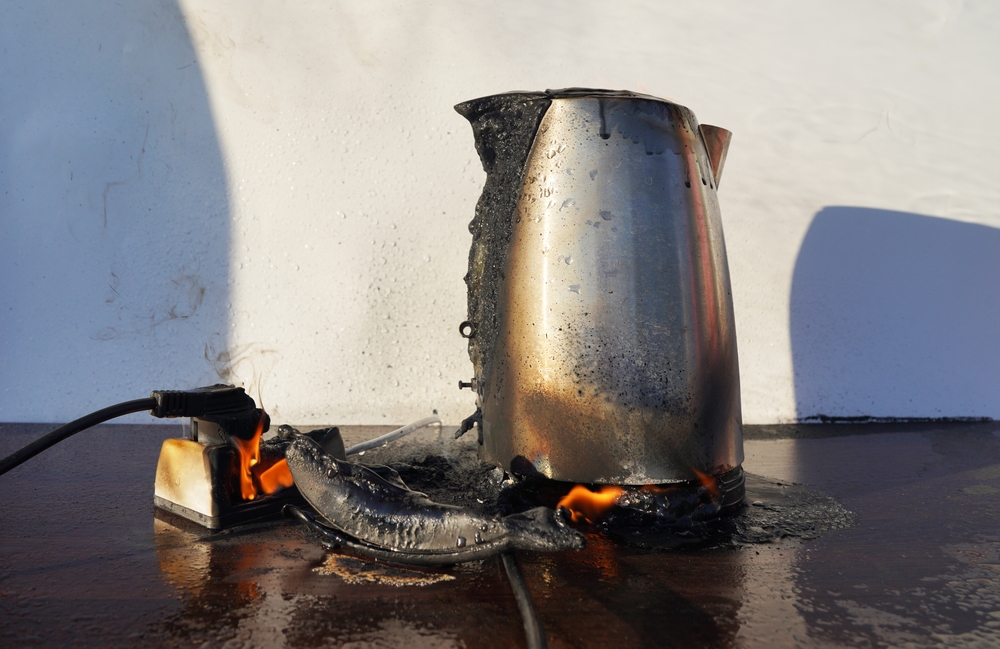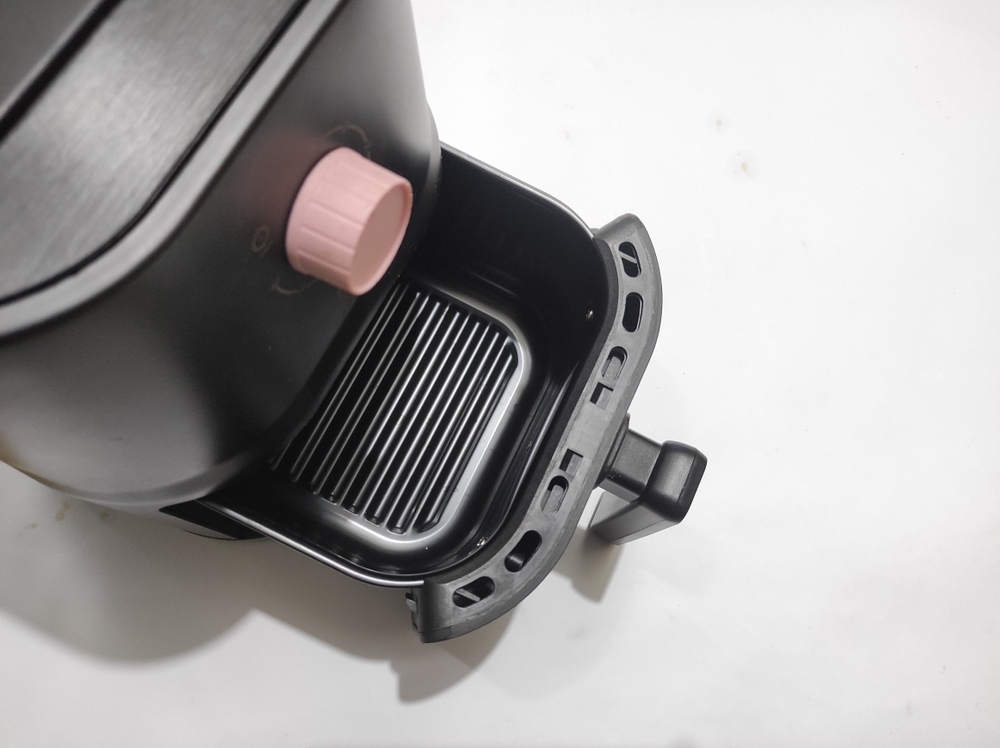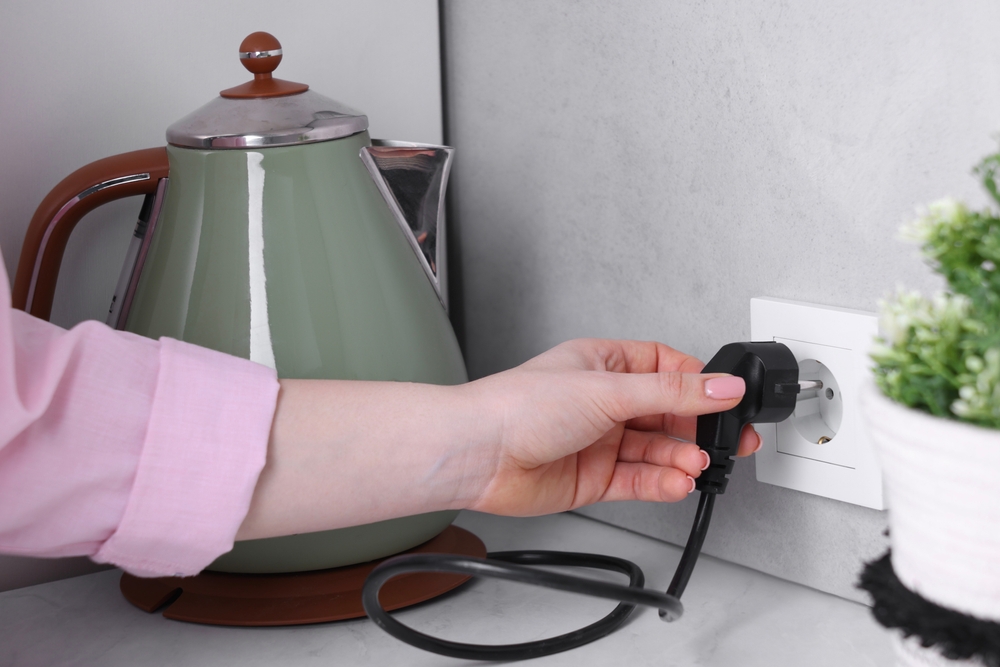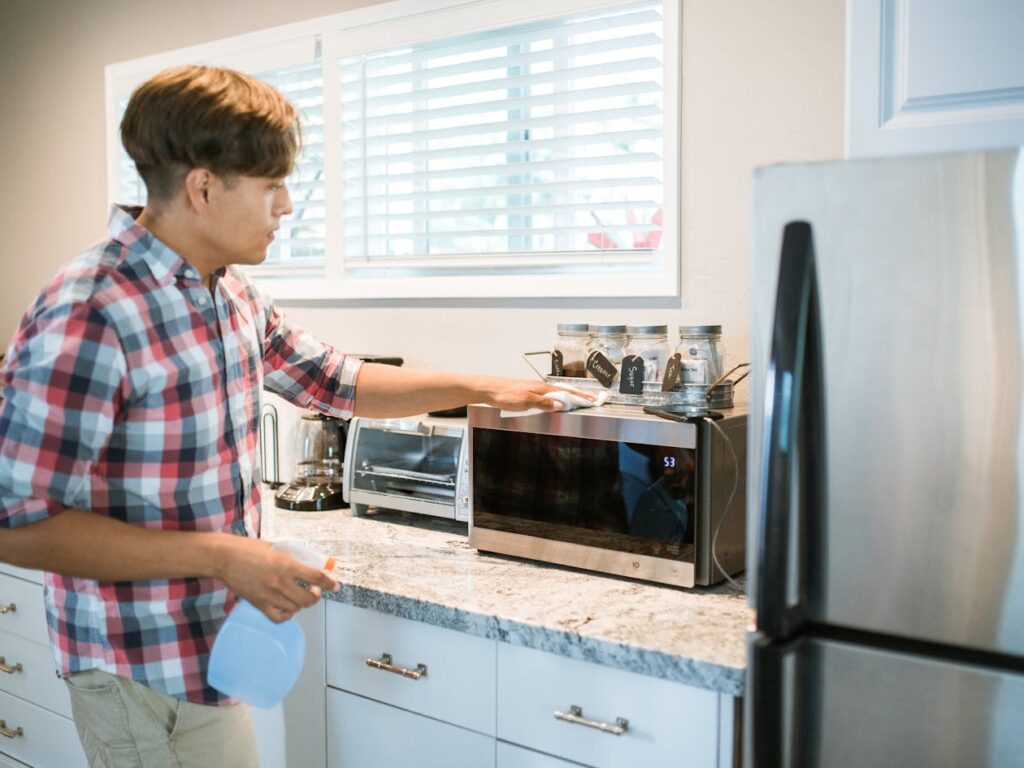5 Kitchen Appliances That Could Start a Fire While You Are Asleep

You lock your doors at night. You check that the stove is off. You make sure candles are blown out. But there’s a fire hazard in your kitchen right now, sitting on your counter, doing absolutely nothing. Or so you think.
Millions of homes keep their favorite kitchen gadgets plugged in overnight. Air fryers. Coffee makers. Toaster ovens. We assume that when we press “off,” these appliances stop being dangerous. We’re wrong.
Even when idle, certain kitchen appliances create electrical risks that grow worse while you sleep. Fire safety experts and electricians see the aftermath of these overnight fires more often than most people realize. And the pattern is always the same. Someone went to bed. An appliance stayed plugged in. Something went wrong in the wiring or the outlet. By morning, a kitchen becomes unrecognizable.
Prevention takes seconds. Just pull the plug. Yet most of us never do it because we don’t understand what’s happening inside these machines when we’re not looking.
Why Your Countertop Appliances Are Secret Fire Hazards
When you flip off your air fryer or toaster oven, you stop the cooking function. But you don’t always stop the flow of electricity. Many modern appliances continue pulling small amounts of power even in “off” mode. Electricians call it phantom power or standby power.
That trickle of electricity seems harmless. But pair it with aging wiring, a power surge from a storm, or a faulty component inside the appliance, and you create conditions for overheating. Over time, that heat can ignite surrounding materials. Plastic casings. Wooden counters. Kitchen towels left too close.
Several factors turn everyday appliances into potential fire starters.
Cheap internal components fail faster than quality parts. Budget brands sometimes cut corners on wiring insulation or use substandard heating elements. When these parts degrade, they can short circuit or spark without warning.
Power grids experience voltage fluctuations. During storms or peak usage times, your home’s electricity supply can spike or drop. Appliances that stay plugged in absorb these surges. Over months and years, repeated surges damage internal circuits and increase fire risk.
Appliances age poorly. Even good products break down. After five or ten years of use, insulation wears thin. Heating elements crack. Thermostats stop regulating temperature correctly. An old microwave or coffee maker becomes a liability simply by staying connected to power.
Outlets themselves become hazardous. Many kitchens run on circuits designed decades ago. Adding multiple high wattage devices to a single outlet or power strip can overload the system. Worn outlets with loose connections generate heat and sparks.
Dust and food particles accumulate inside vents and around heating coils. When electricity flows through dirty components, it creates more resistance. More resistance means more heat. Enough heat can ignite whatever is caught inside.
All these factors combine while you sleep. You can’t smell smoke. You can’t see sparks starting. By the time smoke alarms sound, flames may already be spreading.
Five Appliances to Unplug Every Single Night
Some kitchen devices deserve special attention. Based on fire department data and electrician warnings, these five appliances cause the most concern when left plugged in overnight.
1. Air Fryers

Air fryers pack incredible power into small packages. Most units draw 1,500 watts or more. That’s comparable to a full size oven. Yet we plug them into standard outlets designed for much lighter loads.
Internal heating coils in air fryers reach extreme temperatures during use. Even after you turn them off, residual heat stays trapped inside. If the appliance has any defect in its cooling system or temperature regulation, that trapped heat can build rather than dissipate.
Budget air fryer brands flood the market. Many use inferior wiring that can’t handle repeated heat cycles. After months of use, plastic components near heating elements can warp or melt. Once internal damage starts, fire risk increases each time you leave the unit plugged in.
Weak or aging outlets compound the problem. If your kitchen outlet feels warm after using your air fryer, that’s a red flag. Unplug immediately and have an electrician inspect it.
2. Toaster Ovens

Older toaster oven models lack modern safety cutoffs. Some continue allowing current to flow even when the control dial sits in the “off” position. Combined with crumb buildup on heating elements, you create a perfect recipe for combustion.
Power surges hit toaster ovens hard because heating elements are sensitive to voltage changes. A sudden spike can activate the heating coil for a split second. If crumbs or grease coat that coil, ignition can happen fast.
Many people place toaster ovens under cabinets or near walls. If a malfunction causes the exterior to overheat overnight, nearby surfaces can reach ignition temperature. Wood cabinets and plastic containers stored above become fuel.
3. Electric Kettles

Most electric kettles seem safe. Boil water, pour, done. But thermostat failures happen more often than manufacturers admit.
When a thermostat stops working correctly, the kettle loses its ability to shut off when water reaches boiling point. If you leave it plugged in overnight and any kind of electrical glitch triggers it, the kettle will boil dry. Once water evaporates, the heating element stays on. Empty kettles can reach temperatures high enough to melt their own plastic bodies and ignite anything nearby.
Mineral deposits from hard water can also interfere with internal sensors. If you live in an area with hard water and never descale your kettle, you increase the chance of thermostat failure.
4. Coffee Makers

Traditional drip coffee makers with warming plates present specific dangers. Many models keep warming plates active for hours after brewing. Some have faulty auto shutoff features that don’t work as designed.
If you forget to add water or the pot shatters, the warming plate continues heating an empty surface. Glass shards or plastic components can melt. Electrical wiring near the heating element can degrade from constant exposure to high heat.
Programmable coffee makers with built in timers can malfunction and start brewing cycles randomly. If this happens at 3 AM and something goes wrong with the water reservoir or heating element, you won’t know until smoke fills your bedroom.
5. Microwaves

Older microwaves become fire hazards as internal components fail. Magnetrons generate the microwave radiation that heats food. When magnetrons age, they can arc or spark. If this happens while you’re away or asleep, the sparking can ignite food particles stuck to interior walls.
Door seals degrade over time. Worn seals allow radiation to escape and can create hot spots on exterior surfaces. If a microwave sits near curtains or paper products, external overheating can start fires.
Microwaves over ten years old should be unplugged whenever you’re not actively using them. Better yet, replace them entirely. Technology has improved enough that modern units offer better safety features and more efficient performance.
Double Win by Lowering Your Electric Bill While Sleeping Safer
Fire prevention gives you the main reason to unplug. But saving money provides extra motivation.
Phantom power costs American households billions annually. Each device pulling standby power seems insignificant. A few watts here, a few there. But multiply that across five or ten devices running 24 hours a day, and you add real dollars to your monthly bill.
An average household wastes 5 to 10 percent of its electricity on phantom power. For a family spending $150 per month on electricity, that equals $90 to $180 wasted every year. Simply unplugging kitchen appliances at night can reclaim a chunk of that money.
Energy efficiency matters beyond your wallet. Reducing unnecessary electricity consumption lowers your carbon footprint. Every kilowatt hour saved means less fuel burned at power plants. Small individual actions create meaningful environmental impact when millions of people adopt them.
Building Your Nighttime Unplug Routine
Knowing what to unplug matters less than actually doing it. Habits form through repetition and systems.
Start with just two appliances tonight. Pick your air fryer and coffee maker. Walk to your kitchen before bed and unplug both. Do this for one week. Once it feels automatic, add the toaster oven. Then the electric kettle. Finally, the microwave.
Visual reminders help new habits stick. Put a small note on your refrigerator that says “Unplug 5.” Place colored stickers next to the outlets for appliances you need to disconnect. Set a phone alarm for 10 PM labeled “Kitchen Safety Check.”
Keep appliances near accessible outlets. If you have to move items or reach behind heavy objects to unplug something, you won’t do it consistently. Arrange your counter space so that plugs stay visible and easy to grab.
Get family members involved. When everyone shares the responsibility, the habit becomes part of household culture. Kids can learn fire safety early by helping with the nightly unplug routine.
If five appliances feels overwhelming, prioritize based on age and usage. An old microwave matters more than a new electric kettle. An air fryer you use daily presents more risk than a toaster oven you use weekly.
Extra Protection Through Tools and Tech

For people who want backup systems, technology offers solutions.
Smart plugs let you control outlets from your phone. Set timers so that appliances automatically disconnect at midnight. Even if you forget to unplug manually, the smart plug does it for you. Many models also track energy usage so you can see exactly how much phantom power costs.
Surge protectors designed for kitchen use can handle high wattage appliances while guarding against voltage spikes. Look for models with automatic shutoff features that cut power when they detect dangerous surges.
Have a licensed electrician inspect your kitchen outlets every few years. Loose connections, scorched wiring, and worn receptacles are invisible problems that create major risks. Professional inspection costs far less than fire damage.
Consider replacing appliances over ten years old. Modern safety standards have improved. New devices include better temperature regulation, automatic shutoffs, and higher quality components. Sometimes the safest choice is upgrading rather than continuing to use aging equipment.
Review your home insurance policy. Confirm it covers electrical fires and understand what documentation you need if something happens. Taking photos of your kitchen and keeping appliance receipts can speed up claims processing.
Peace of Mind Is Just a Plug Away
House fires destroy lives in minutes. Yet prevention can take seconds.
You already practice dozens of safety habits without thinking. You wear seatbelts. You look both ways before crossing streets. You keep medicines away from children. Adding five appliance unplugs to your nightly routine requires the same minimal effort with potentially massive benefits.
Every time you pull those plugs, you eliminate multiple fire risk factors simultaneously. No phantom power draw. No vulnerability to voltage surges. No chance of internal malfunctions activating while you sleep.
Start tonight. Walk to your kitchen right now and unplug your air fryer. Feel how simple that action is. Then commit to doing it every single night. Add the other four appliances over the next week.
Share this information with friends and family. Many people have no idea their kitchen appliances pose overnight risks. A quick conversation could prevent tragedy in someone else’s home.
Fire safety doesn’t require expensive renovations or complicated systems. Sometimes protection comes down to the smallest actions repeated consistently. Five plugs. Ten seconds. Total peace of mind.
Your kitchen will be there tomorrow morning, exactly as you left it, ready to serve breakfast. And you’ll sleep better knowing you’ve eliminated one of the most common and preventable causes of house fires.
Loading...

